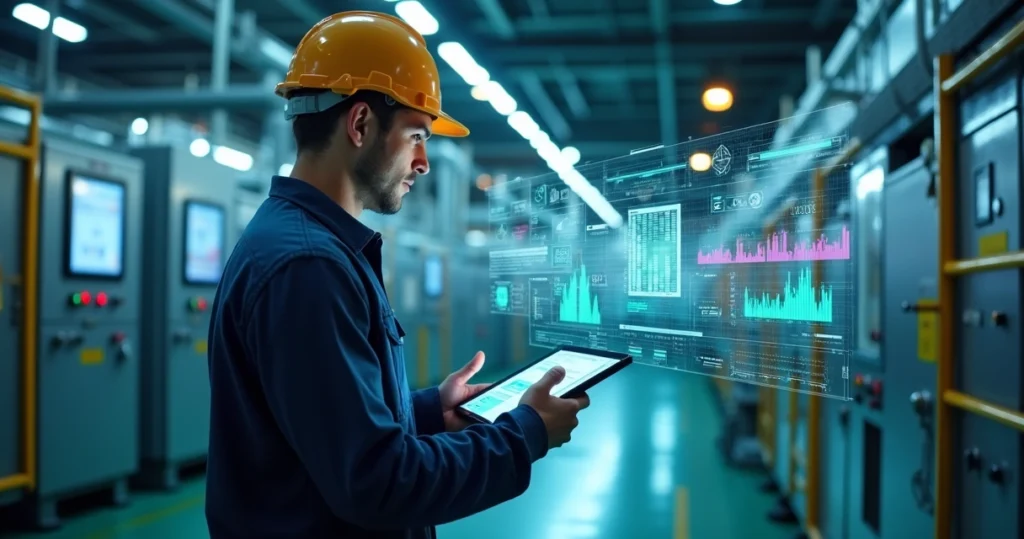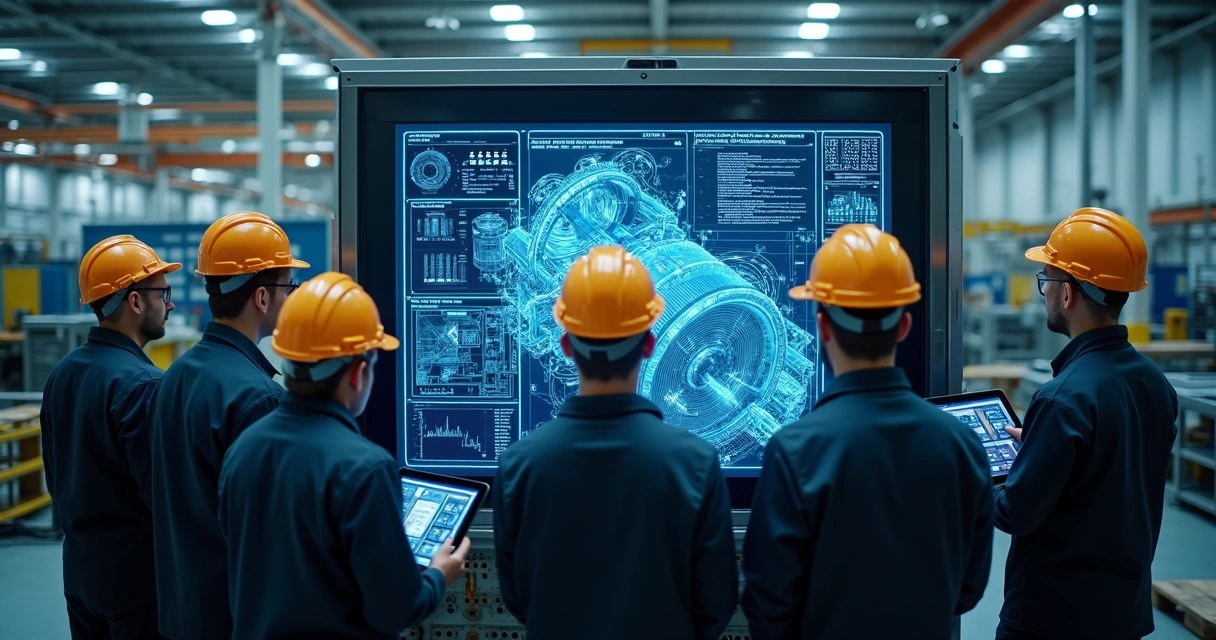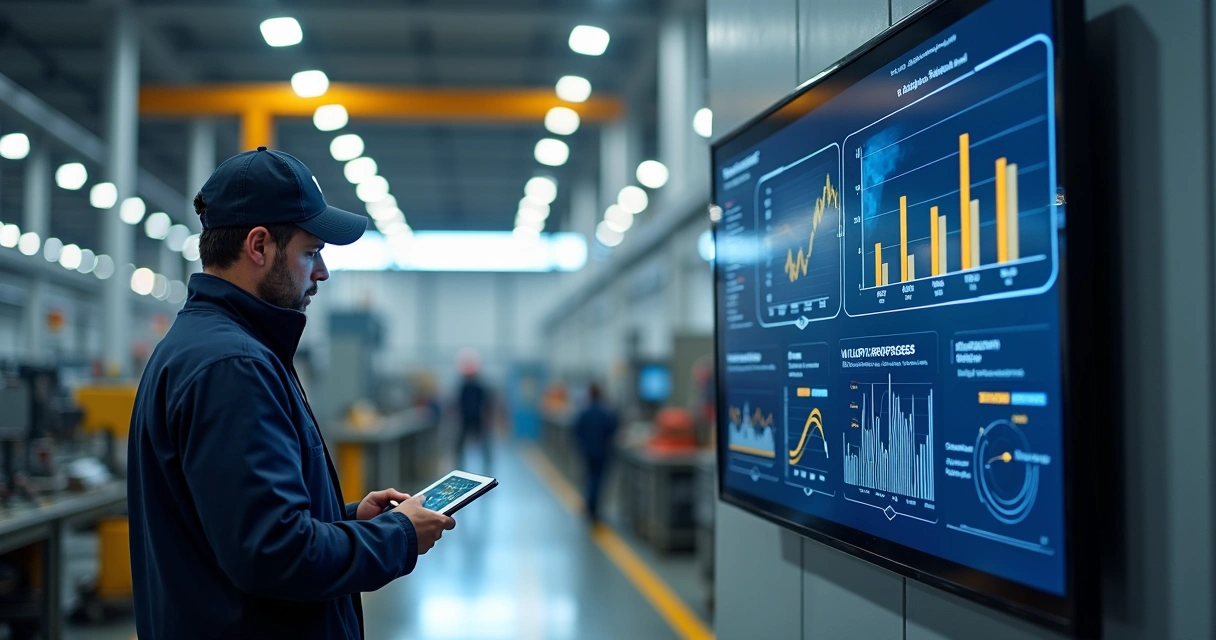Cómo integrar la inteligencia artificial en su GMAO en 2025

The idea of merging artificial intelligence with maintenance systems is not just a trend―it’s shaping the very way industrial teams work and compete. For those in the maintenance field, especially those running large operations or juggling complex assets, the promise of AI is finally materializing. No, it’s not magic. It’s data, strategy, and picking the right moment to leap forward.
Still, these things rarely happen overnight. I remember a technician who, at first, kept a notebook of every machine’s “quirks.” He’d raise an eyebrow each time someone mentioned AI. That changed after his company adopted a CMMS with AI-driven diagnostics. Suddenly, those insights weren’t buried in scribbled notes; they were laid bare, right when he needed them. He still keeps the notebook, but now—only the best stories go in there.
Why AI and CMMS now fit together
People have been talking about predictive maintenance and smart scheduling for years, but for many companies, it remained out of reach. According to data from Sebrae and the Gartner Group, 76% of small and medium-sized companies still don’t use a dedicated system for business management. Despite all this, modern AI systems, like Prelix, are breaking through old barriers. Why? Because the tools are simpler, the integrations are smoother and the need is obvious.
- Machines are producing more real-time data than ever.
- Maintenance costs—downtime, repair, inventory—never stop mounting.
- Safer procedures and stronger compliance rules demand faster, clearer reporting.
AI turns scattered data into sharp decisions.
Integrating AI into a CMMS isn’t about chasing hype. It’s about bringing faster diagnostics, clearer root-cause analysis, and less guesswork to your daily routine. According to the Observatório Softex, global AI software revenue will hit $126 billion by 2025—a 77% jump in just two years. Maybe that’s a sign the industrial world is ready for something different.
What does an AI-integrated CMMS look like in practice?
So, how does your typical day change when AI joins your maintenance management software? Here’s a simple scene that’s playing out in more plants next year. Imagine an operator logs a minor anomaly in a conveyor belt vibration. The AI in your CMMS instantly analyzes recent and historical data, reviews similar events, and flags the issue as “urgent—likely bearing failure.” Next, it pushes a recommended action to your phone (or your colleague’s). Within minutes, you’re looking at not just the raw alarm, but a diagram and suggested fix. Short sentences. Fast answers.

Maybe it sounds simple, but the ripple effect is huge—less downtime, fewer mistakes, and clearer compliance records ready to go. Solutions like Prelix now offer plug-and-play integrations that make it easier for legacy systems to benefit, turning equipment failures into actionable information instead of paperwork headaches.
Steps for integrating AI into your CMMS
You don’t just turn on AI and watch results appear. Integration works better with a plan—maybe one like this:
- Start with your data. Gather all available equipment histories, failure logs, and sensors you have. The more data you feed into your CMMS, the smarter any AI module becomes.
- Map your existing systems. Know exactly which CMMS you’re using, how it connects with sensors, ERP software, and reporting tools. Sometimes, just drawing the connections surprises people. That’s fine.
- Pick your AI features. Do you want instant diagnostics? Do you need automated root cause (like 5 Whys analysis)? Or is your team ready for predictive scheduling? Be honest about what’s realistic for your operation.
- Choose a trusted partner. There are software providers that focus on transparent, easy integrations. Prelix, for example, is made for simple connections so teams aren’t left figuring out messy scripts or confusing APIs.
- Prepare your team. Successful adoption depends on training and buy-in. Schedule workshops that mix hands-on technical demo with practical context: less “how it works,” more “how it helps you.”
- Test and tune. Before rolling everything out at once, try the AI integrations on a small scale. Let operators and managers see what changes—and let them ask questions. Some pushback is normal; use this phase to adapt.
- Connect compliance and reporting. Use the AI features to automatically generate maintenance reports. This can save hours during audits and make workplace safety records easier to keep.
Don’t try to do everything. Do the first thing well.
Of course, integration seldom goes without a hitch. According to a recent Gartner survey, 77% of engineering leaders call AI integration a significant challenge, and 71% face workflow issues when testing new AI tools. Reasonable expectations and clear communication go a long way.
Common challenges and some honest thoughts
There’s a temptation to jump right in, but I’ve seen companies end up tangled in unnecessary complexity. Sometimes it’s legacy hardware; sometimes, it’s just habits. There are a few tricky spots most teams face:
- Clean, connected data. You can’t get sharp insights from half-baked logs or missing sensor data. Sometimes this means a little digital spring cleaning.
- Network and cybersecurity. Industrial networks aren’t always ready for added data streams. Protection remains a hot topic, especially when compliance is strict.
- Team hesitancy. Maintenance techs are often skeptical—rightfully so—when asked to trust a new system. That’s why transparent results and good stories matter.
- Balancing investment vs. payoff. Studies from industry experts show that proactive, AI-augmented maintenance does reduce downtime and costs, but only if people actually use the systems.
What’s not always said out loud? Sometimes, you don’t need every flashy feature to see gains. Even small moves—like quicker failure diagnosis or auto-generated compliance documentation—can mean a lot.
The benefits you’ll see (and a few you might not expect)
AI in a CMMS like Prelix almost always brings faster diagnosis, quicker work order turnaround, and simpler compliance. But every once in a while, it gives you something unexpected: less stress during audits, or even just more time in the day for process improvement.

- Higher system “uptime”—with detailed records to prove it
- Frontline teams with less manual reporting
- Compliance audits that move much faster
- Reduced operational risk because you see issues before they become disasters
AI isn’t perfect. But it’s rarely wrong twice.
So, maybe that’s really why teams keep making the switch. Less “firefighting,” more confidence when the phone rings.
Getting started in 2025
If you’re still waiting for the perfect year to add AI to your CMMS, 2025 looks good. The market is growing rapidly, options like Prelix are ready for easy plug-in, and teams are learning that it’s not about replacing people—it’s about making better calls and keeping machines running.
Take it one step at a time. Test. Train. And don’t worry if there are a few bumps. The benefits are there for those who start―and keep listening as both people and AI learn together.
Conclusión
Bringing AI to your maintenance management system in 2025 doesn’t require a leap into the unknown. It’s about taking clear steps—looking at your data, mapping out your processes, and choosing tools made for real teams. Solutions like Prelix show what’s possible when teams focus on solving practical problems and making information flow easily from machine to manager. If you want better results and safer operations, start looking for ways to bring AI into your maintenance routine this year. Get to know Prelix, and give your team a real chance to work smarter with confidence.
Preguntas más frecuentes
What is AI in a CMMS?
AI in a CMMS refers to features that use data-driven algorithms to assist with maintenance scheduling, failure diagnosis, and reporting. Instead of relying only on historical data or manual entry, the system analyzes real-time machine data, worker notes, and sensor readings to spot trends, predict issues, and automate routine decisions. With platforms like Prelix, AI turns disparate information into actionable steps that save time and help avoid unplanned equipment failures.
How to add AI to my CMMS?
Most companies take a step-by-step approach. Start by gathering all existing maintenance data—equipment logs, work order reports, sensor outputs—and make sure your CMMS can connect with these sources. Next, review the integration options available for your system. Choosing a platform built for flexible integration, like Prelix, makes things easier. Train your team, start with a pilot or limited rollout, and track how the new features perform before expanding to the whole operation.
Is AI integration worth the cost?
Most studies show that the reduction in downtime, fewer emergency repairs, and faster reporting often cover the initial expenses over time. The benefit tends to be fastest for operations with complex or aging equipment. Some savings, such as improved compliance or less manual labor, aren’t visible right away but become clear in the longer term. The most successful integrations are those matched carefully to the company’s needs and resources.
What are the best AI tools for CMMS?
The best AI tools are those tailored for direct integration, transparent diagnostics, and usability. Solutions like Prelix offer instant failure analysis, auto-generated root cause reports, and easy ways to plug into your existing workflows. Look for tools made specifically for maintenance—not just generic analytics platforms—to ensure smooth adoption by your team.
How much does AI for CMMS cost?
Prices vary widely based on your plant size, the number of assets, and which AI features you want. Some providers offer monthly or annual subscription models, while others may have additional setup or training fees. It’s a good idea to define your needs early and ask vendors, like Prelix, for clear quotations including integration support and ongoing updates. It’s rarely “cheap” at first, but for most companies, the investment pays off in efficiency and reliability gains.
